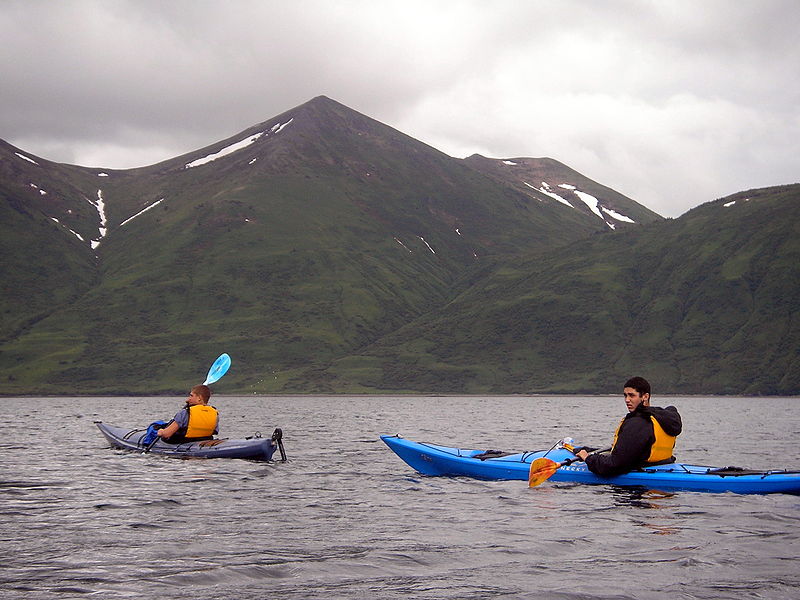When the boat comes in

A day in a Kayak or canoe is the perfect way to enjoy beautiful scenery and get fit
The idea of taking up kayaking can trigger uncomfortable images. Maybe you’ve considered trying it but were turned off by the soggy supposition that you would have to go through a dunking initiation – and perhaps you’ve imagined getting a leg trapped in the process of trying to disentangle yourself after capsizing.
But that, says Howard Blackman, Head of Participation at the British Canoe Union (BCU), is all in the past: ‘What generally used to happen, say, 30 years ago is that you would be asked to prove you could swim by crossing the river and back, then you’d get in your boat and be asked to capsize to prove you could do that safely, and only then would you start. That was all a bit of a barrier, and it’s changed now.’
These days, though you still need to learn what to do in the event of a capsize, you don’t have to actually go ahead and do it. The design of kayaks has evolved so much – the cockpits are a lot larger than they used to be, for example – that were you to capsize you would generally fall out of the boat without having to free yourself. As everyone wears a buoyancy aid, ability to swim is not quite as important as confidence in the water (though some canoe clubs might ask you to swim 50 metres in a buoyancy aid). Besides, if someone is still nervous about getting stuck inside a boat, they can always use a sit-on-top kayak. As long as you start out under proper supervision and follow basic guidelines, kayaking is supremely safe – as well as a fascinating way to explore rivers and coastline from a new perspective.
Stuart Wagstaff runs the National Kayak School, based at Aberfeldy and Oban in Scotland (www.nationalkayakschool.com), and takes people out on the rivers Tay and Awe. ‘The comment we hear most often is that they didn’t realise there was anything as nice as this, and often they think it’s comparable with anywhere abroad. The rivers we have, for beginners, are absolutely fantastic. The scenery is really nice – the rocks, the trees coming down to the river. We also see otters, mink, ospreys fishing, and the kids love the ducks and ducklings.’
For families, rivers are the best place to start. They are more interesting in terms of water movement and sightseeing than lakes or lochs, and they don’t have to be particularly hard work, as you’re being carried by the current. Though sea kayaking is fascinating in its own right – Stuart enthuses about the dolphins, porpoises, otters, seals, sea caves, sunsets and sunrises you can see around the Scottish coast – it is physically more demanding, especially if you are paddling into the wind.
As always, it’s best to begin by taking the family on a course. ‘Most clubs will accept children of any age, but certainly from eight years old onwards it becomes a lot easier,’ says Howard. The BCU website (www.bcu.org.uk) gives a list of clubs and centres that meet their approval in terms of instruction and quality of canoeing (in general, kayaking and canoeing are referred to together as ‘canoeing’ in Britain). During a course, you will learn how to hold the paddle correctly, the stroke, how to sit properly, and how to manoeuvre the boat. You don’t need any specialist equipment beforehand: the boat, paddle and buoyancy aid will be provided – and, where necessary, a helmet.
You learn in either a kayak or canoe. Canoes differ from kayaks in that they are open boats, and you use a single-bladed paddle, whereas kayaks have closed decks and are propelled with a double-bladed paddle. For a family, a benefit of a canoe is that you should be able to get everyone in the one boat (although you may benefit from checking out some of these transportation ideas for a canoe if you own your own boat so that you can make sure it gets from A to B safely). Kayaks are typically designed for one, but doubles are also available, so a parent can pair up with a young child. In terms of fitness, paddling will give you an upper body workout, and develop cardio.
After you’ve mastered the basic skills, a whole world of possibilities opens up. Canoeing is a skill that can give holidays an extra dimension. You might want to keep up with dolphins or whales out at sea, or take the family on a canoe and camping trip into the wilderness, or hunt out foamy rapids together for some adrenalin thrills. There is a whole competitive side to canoeing to get involved in as well – slalom, sprint racing, marathon racing and even canoe polo. Whatever floats your boat. ‘The great thing about it is that the whole family can get involved from day one,’ says Howard, ‘and there’s something for everyone.’


